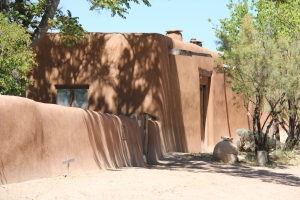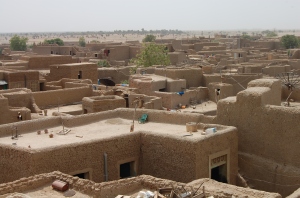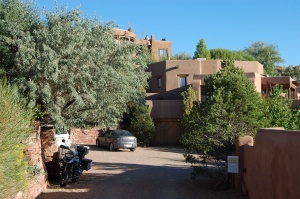
Here in Mali, a normal day doesn’t exist for me, every single one is different, bringing new experiences, new challenges, new ideas. One day may involve many, many layers of actions, of meeting, of senses being used.After a day like that you’re either exhausted or you’re so full, it can be a blur.
Mali has an abundance of things to write about, that’s for sure. As an outside observer it was and is possible, but as I get closer and closer to this country and its lovely, but complex people, there is less room for objectivity. This particular trip has given me a battering of senses and emotions, far more than before, and its taken me a while to unravel it all. I hope you enjoy what I unravel.
Timbuktu

Going to Timbuktu, one of the worlds most famous destinations, is one of the longest, yet most rewarding journeys to make at least once in your life. You can take the slow boat and arrive as tranquil as the beautiful river passage itself. Or go by car. If you travel by road, like i did, from Bamako, it is two long days of driving. Hours and hours of hot jostling and bouncing in 4×4’s at speed, across sandy tracks avoiding families of sleeping donkeys, stray camels, and kamikaze goats. Pretty exhausting, exciting stuff. East of Mopti, as you get closer to Timbuktu, wearing a scarf wrapped around your head and face in true Malian style is essential, to avoid breathing in the fine dust that gets everywhere, even inside the cars.
You can feel you’re hardy when you’ve survived all that, and lived to tell the tale, but the roads are actually safer this side of Mali, ie, east of Mopti there is less traffic and no crazy buses trying to drive each other off the roads. The governments of the world would have you think otherwise – more on that later.
This is my third visit to Timbuktu, an ancient oasis, a town of trading and learning and spirituality. Situated in the edge of the Sahara, the worlds biggest desert, on the trans Saharan trade route. It’s situation, just ten miles from the River Niger gave it an advantage and easy access to river craft which carried the heavy gold from the South and salt that was brought here by camel from the North. The salt trade still exists. Mined in Taoudenni (16-19 days away by camel) and Arouane, (8-9 days) great tablets of salt are lashed onto the sides of camels which are ridden and walked in caravans, (groups), often by night when its so much cooler. Temperatures plummet at sundown here, from searing heat to freezing cold. The desert is extreme.
The Tuareg caravan chefs (leaders) know the land by heart, can detect the changes in texture of sand under the camels foot, can read the landscape like a well loved face. The stars are used to navigate and the moon as a lamp. Not everyone uses camels to get around here, though, 4×4’s are more and more common in the Timbuktu region, mostly Toyota’s.
Once having 15 Islamic schools, a population of 100,000 people, and attracting 20,000 students and scholars from West, North Africa and the Middle East, Timbuktu’s heyday was between 1490-1591 when it was ruled by Mohamed Askia. The Islamic University here was flourishing while Cambridge and Oxford was still in its nappies, so to speak. Timbuktu started to slip into decline in 1591 when the Morrocans took over, but it is still today a town of learning, a town of libraries containing thousands of ancient manuscripts, which are being lovingly copied and restored.

On the face of it, Timbuktu appears a hot dusty place, with a mixture of stone and mud plastered buildings, like the one above, which unusually, has hand prints all over it. Deeply rutted dusty tracks, with the usual Malian debris (plastic bags) wind between the high walls which border the streets. People here dress just as colourfully as elsewhere in Mali, although turbans are more obvious and definitely needed against the sun, dust and wind. Tourists are soon wrapped up in them too.
Scratching beneath this towns façade and spending time here helps you to feel its history and soul.
As usual, the town is not a town with out its people. Friendly, open, honest. Crime doesn’t seem to exist, and trust does. We westerners are always a little guarded, especially around our belongings, but here, things rarely go astray.

I’m staying in Timbuktu at the head office of Timbuktucien, Aly Dicko, who runs one of the best Malian tour companies, Mali Mystery Expeditions. http://www.malimystereexpeditions.com
Through the support of international partners, he runs his own hotel, Houndé Mali, which means, Mali Soul. (www.houndemali.com)
I’ve travelled here pre Festival as guest of From Here 2 Timbuktu, a tour company run by a rather unusual Englishman Guy Lankester, who partners with Aly to organise his tours. I can see why. Aly has a great capacity for organising, is so calm, considerate and confident and is so well connected here that one feels anything is possible. I’ve never felt in safer hands and safety here is the topic of the moment.
Many tourists have stayed away from both Mali and the Festival this year because of the potential threat of a terrorist attack/kidnap. At the opening celebration of the Festival, the Minister for Tourism said thank you to the foreigners who have been brave enough to come; brave enough not to listen to their governments.
To walk on the streets of Timbuktu says it all. Smiles, inquisitive looks, greetings from women in doorways, from the groups of men huddled around the tiny braziers brewing pots of sweet green tea and children wanting to shake hands. Kidnap here feels like an extremely remote possibility, like Timbuktu itself. I urge you to visit. * Note added Spring 2012. The situation in Timbuktu has radically altered for the worse and is completely unsafe. You should not go for the time being,
The Festival

A gathering of souls from around the world some of whom come to listen to World Music, some come to meet cultures different from their own. Some come to trade, some come to find a wife.
On my first evening I’m offered 50 camels for my hand in marriage. I turn him down, saying sorry I’ve had a better offer- 200 camels. He is visibly shocked!
Then I’m nearly run down by some Tuaregs posing on their camels. If they had been paid for every picture taken by the westerners, they would be rich.
The wandering traders are selling hard, and its a bit overwhelming at times dealing with them and the heat, as they tend to walk with you until you convince them you really are not interested, which can take a while.
Young boys try to befriend you and then when you think that’s all they wanted, they lay a small cloth on the ground and get out some trinkets to sell.
Genuine friendships are made too, in the most surprising places.
Send A Book to Mali progresses too
A midday break on day two of the Festival with Aly, and driving back into town on the 2 kilometer desert sand track to fetch provisions for the two encampments he’s responsible for and a chance to meet the mayor Aziza Kattara, with Aly stepping in to interpret for me. Aly had re-met Aziza on the plane just days before, so as soon as I mention my book project to him, he considered her the first port of call. We arrive at the Mairie, and she listens to my idea of bringing old, loved (recycled) children’s books to Timbuktu next year. She is interested. We agree to continue to correspond.
She has a project too, she wishes to tell me about, and so I will tell you too. She is creating an Orphanage for the destitute street children of Timbuktu, many of whom are Bela, the poor relations of the Tuareg. She aims to house, feed and educate these extremely poor children and is looking for people internationally who will ‘parent’ these children remotely. I will post more information when i have it. Aziza has been to Hay on Wye, England. If you haven’t already noticed in my blog, Timbuktu is twinned with the amazing town of books. Oddly I kept bumping into people both young and old who had been to Hay on Wye.
The desert and the Tuaregs

The Festival offers interactions with Tuareg culture and at the moment because the Northern desert is ‘off limits’ to westerners, its one of the only ways to do this. Tuareg music has a healthy dominance here. Our evening are spent joyfully dancing with the many Tuaregs who have come. We are surounded by turbaned men, many of who hide all but their eyes, and women wearing beautiful sparkling shawls over their heads, herding children, who gaze open mouthed at us westerners dancing and smile when we smile back. The music of the Tuareg is lyrical, repetitive and sometimes mournful.
The way to dance to it seems to reflect the slow and graceful movement of the camel, or perhaps the hand waiving performed by men and women describes the undulating sea of sand dunes. Often scarves are waved – the ends are tipped gently into the air. Beautiful.
Tuareg bands, mostly male instrumentalists, and women singers and percussionists, are all seated in an open semi circle on the stage, in front of which leap fabulous Tuareg Griots, who on their heads, wear wonderful crowns of turquoise and red leather tied around their bronzy indigoed turbans and big billowy Boubous with baggy arab pants beneath. They jump barefoot gracefully from crouching position on the floor of the stage and seem to stay for seconds in the air.

Big name Malian musicians too feature on the programme. Oumou Sangare, Bassekou Kouyaté, Amy Sacko, Habib Koité, Vieux Farke Touré, and local girl, Kaira Harby shortly off on her second American tour in 6 months.
The Tuareg sellers have a big presence here at the Festival. Many have travelled by camel and set up encampements on the site. Guys “Family” from the northern Desert have brought extra tents for us to sleep in and have furnished them with beautiful cushions and other leather ornaments. During the day they leave out silver jewellery, leather covered boxes and knives in the hope that we tourists will buy them.
 On day two of the festival our group’s Australian couple have a re avowal of their love for each other. The encampment’s Tuareg Family are involved in drumming, sing
On day two of the festival our group’s Australian couple have a re avowal of their love for each other. The encampment’s Tuareg Family are involved in drumming, sing
ing, dancing, and bringing in Griots (praise singers/storytellers) and to
generally make an amazing event.
The couple have had clothes specially made in Mopti for themselves and their attendants. All look lovely. We all put our best clothes on too. Flocks of people arrive to wish them well, then Camels arrive and carry them off for a spin around the site. When they are returned both Guy and Aly have major roles to play in the giving away. The couple make vows to each other and are permitted to kiss. Us more sensitive creatures are moved and a small, but tearful group hug is needed.
 Then the Australian woman is led off by the Tuareg Women and installed in a tent, until the men can negotiate a reasonable price for her. I watch the women guarding the tent, smoking their tabs of tobacco neat through short metal pipes. Their dark sun-lined skin is permanently tinted with the indigo used to dye the brilliantly reflective bronze blue clothes that they wear. Their bodies slighter, and smaller; more Arabic looking, with higher cheek bones and paler skin, then is often seen in Mali.
Then the Australian woman is led off by the Tuareg Women and installed in a tent, until the men can negotiate a reasonable price for her. I watch the women guarding the tent, smoking their tabs of tobacco neat through short metal pipes. Their dark sun-lined skin is permanently tinted with the indigo used to dye the brilliantly reflective bronze blue clothes that they wear. Their bodies slighter, and smaller; more Arabic looking, with higher cheek bones and paler skin, then is often seen in Mali.
A cheeky young boy lifts up the edge of the tent with a stick to peep at the Western woman who is reclining inside and probably wondering what’s going on. The boy and is chased off noisily by the women. Eventually, after a price has been agreed, our friend is reunited with the wedding party.















